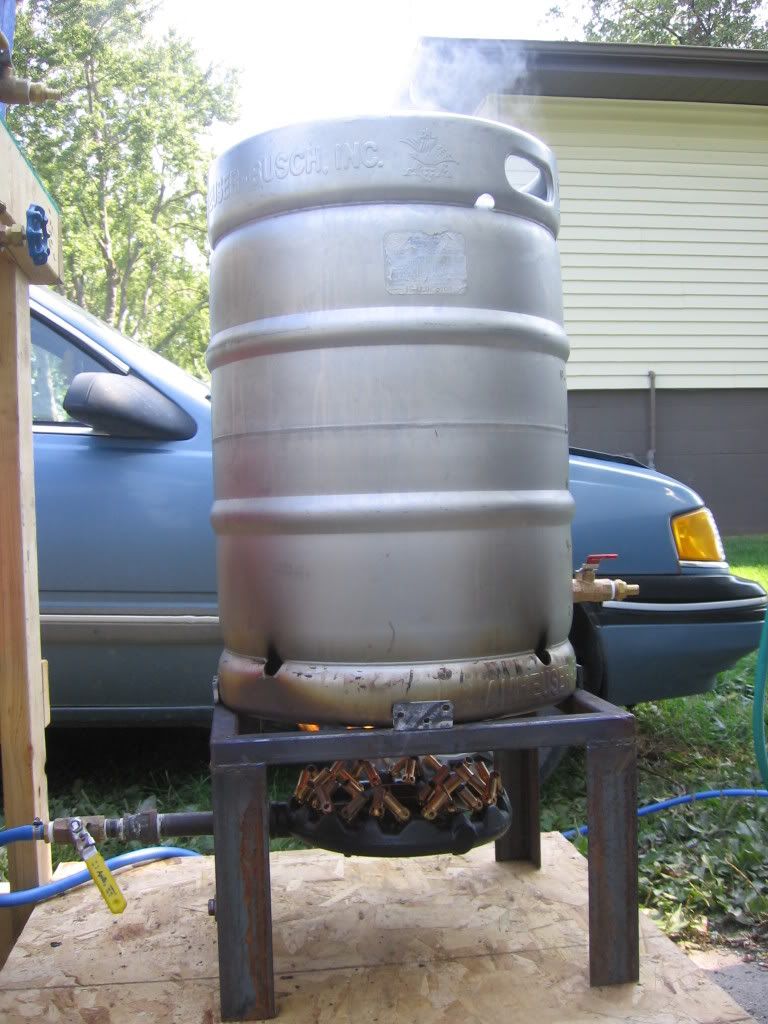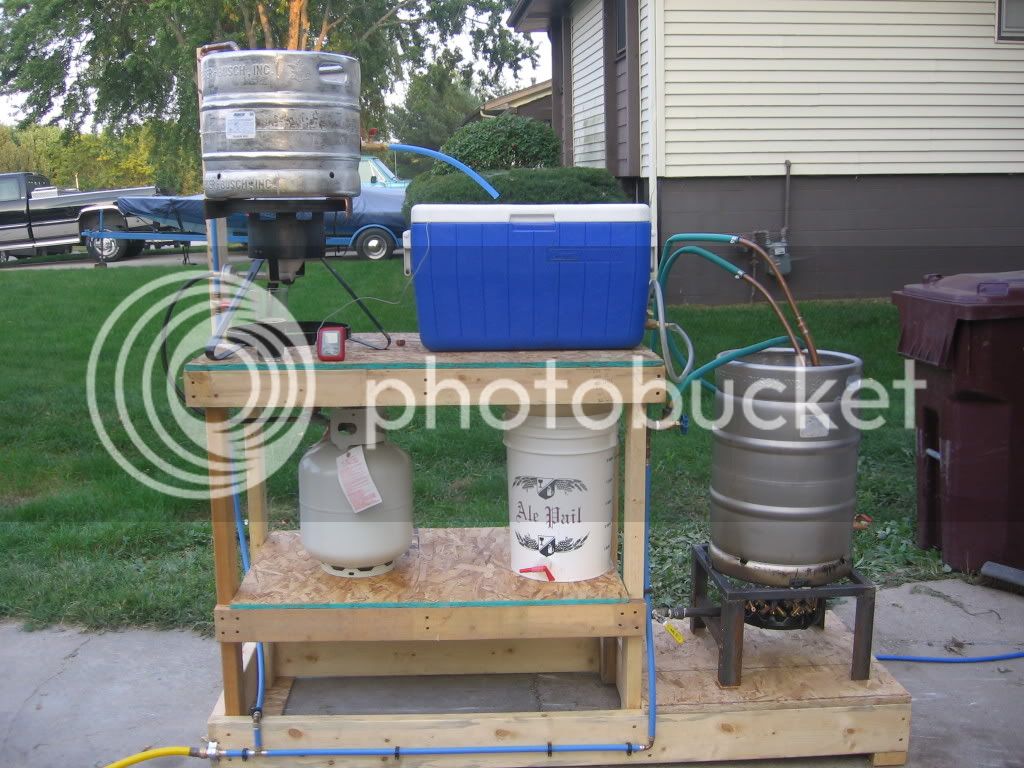This is my version of a natural gas burner that I made. The main reason I went this route is the ease and convenience of using the unlimited supply of natural gas. In the long run it will be cheaper also as the cost of propone vs natural gas is factored in, but that will have to be a long term price recovery.
There was a decent amount of information out there from what others have done but at the same time, every time I came across a thread it seemed there was incomplete information so this is the documentation of what I did.
From what others had said, all I would need is the 10 tip burner and even that would be overkill for a 10 gallon boil. I wanted to go the most economical route so as others have done, I bought the 23 tip nozzle burner or wok burner for $23, it was like $30 after shipping, instead of buying the actual 10 tip burner which is around $60 from morebeer.com. I took out some of the jets and plugged them with 8mm x 1.0 bolts as I found in this thread. Plugging with the bolts using plenty of Teflon tape worked very well to seal them.
The first configuration I tried was very similar to what was shown in the previous referenced thread, I took out the middle four burners and then left only the ones in the outer ring that were pointing in one direction and a four that were pointing inward (sorry no picture). My thought was that this would give the most even heat without any big hot spots. But this does not work very well. I had to light each and every tip; they would not light each other. And when this happened, I understood what others were saying about these burners being temperamental with individual nozzles self extinguishing, especially when they were not at full blast. This also confirmed what others had said about these types of burners only being an on/off without really any heat control even though there were some that said they could control it just using a ball valve as a regulator (and I didnt understand why some could get it to work but others couldnt).
After this failed attempt, it occurred to me that these burners (whether it be the 10, 23, or 32 tip) with all of the tips in place, the tips are pointing at each other and with all of the tips in they would light each other with no problem. So thats how I cam up with my configuration, I still decided to try only using 10 tips but have them all together where they would be pointing at each other so they could light each other so if one would self extinguish it wouldnt matter as it would just get re-lit instantaneously by another tip. I tried the configuration below with just 10 tips all in one area and this works perfectly. The tips will light each other and it is very controllable just using the ball valve.


There was a decent amount of information out there from what others have done but at the same time, every time I came across a thread it seemed there was incomplete information so this is the documentation of what I did.
From what others had said, all I would need is the 10 tip burner and even that would be overkill for a 10 gallon boil. I wanted to go the most economical route so as others have done, I bought the 23 tip nozzle burner or wok burner for $23, it was like $30 after shipping, instead of buying the actual 10 tip burner which is around $60 from morebeer.com. I took out some of the jets and plugged them with 8mm x 1.0 bolts as I found in this thread. Plugging with the bolts using plenty of Teflon tape worked very well to seal them.
The first configuration I tried was very similar to what was shown in the previous referenced thread, I took out the middle four burners and then left only the ones in the outer ring that were pointing in one direction and a four that were pointing inward (sorry no picture). My thought was that this would give the most even heat without any big hot spots. But this does not work very well. I had to light each and every tip; they would not light each other. And when this happened, I understood what others were saying about these burners being temperamental with individual nozzles self extinguishing, especially when they were not at full blast. This also confirmed what others had said about these types of burners only being an on/off without really any heat control even though there were some that said they could control it just using a ball valve as a regulator (and I didnt understand why some could get it to work but others couldnt).
After this failed attempt, it occurred to me that these burners (whether it be the 10, 23, or 32 tip) with all of the tips in place, the tips are pointing at each other and with all of the tips in they would light each other with no problem. So thats how I cam up with my configuration, I still decided to try only using 10 tips but have them all together where they would be pointing at each other so they could light each other so if one would self extinguish it wouldnt matter as it would just get re-lit instantaneously by another tip. I tried the configuration below with just 10 tips all in one area and this works perfectly. The tips will light each other and it is very controllable just using the ball valve.

























